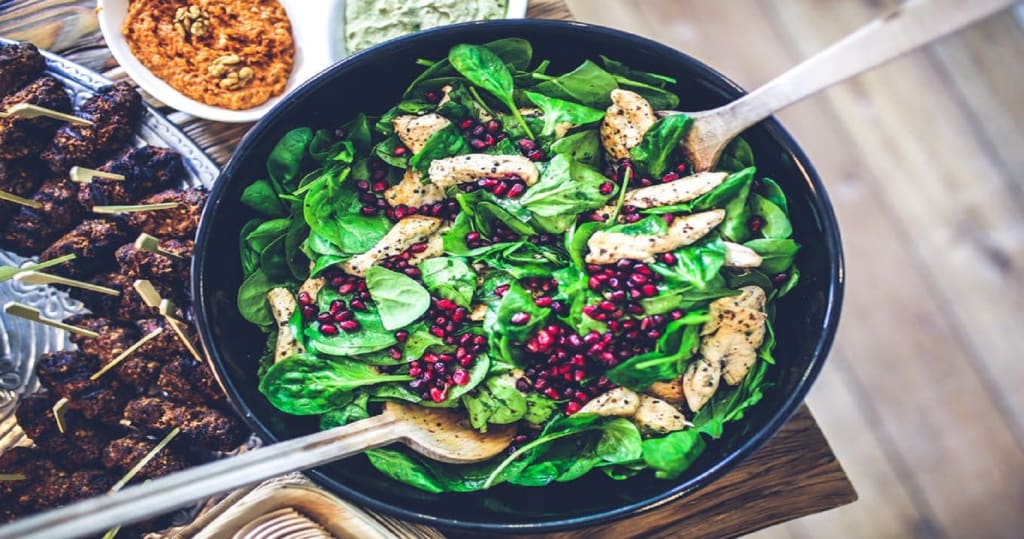Eating Paleo on a Budget
How I manage to eat a primarily Paleo style diet without breaking the bank

The Paleo diet has been called a classist diet and written off as being only for more wealthy and privileged people, so have diets like the gluten free, vegan or even just eating healthier but they don’t have to be.
With the right planning and the right items, you too can eat healthier foods on a lower budget. Below, I’ll give some of my tips from my personal experience.
Every time I go grocery shopping, my goal is to buy healthier foods and slash my monthly budget. We have a family of four, with a three-year-old who is dairy intolerant and I, myself, am gluten and lactose intolerant.
When I first started down the gluten free path, before we found out my daughter had issues with dairy, I found myself spending over 200 a week trying to maintain a new diet as close to my normal diet. I felt a lot better, but I still felt sick so I started to cut back on the processed specialty foods I bought.
As I cut back on the specialty foods, my budget cut itself. We now are in the 120/every 2 weeks range. There will be variations with states, we live in a lower cost of living state (but also lower wage).
Meat will be and has always been the big part of my budget. I try to only buy manager special (Walmart). All I have to do is toss it in the freezer and it lasts almost as long as newer meat does.
I try not to have to cook more than one meal, so even the two on normal diets eat a lot of dairy substitutes and I have a few gluten substitutes I do indulge in (although I try to stick with non-modified, naturally gluten free foods)
Here are a few tips from my experience with lowering our budget to 120-200 every other week.
Keep track of what foods you actually eat. Impulse buying random foods you won’t eat is a major budget killer. Just because a food is on sale or looks good in the picture doesn’t mean it won’t go to waste. Pay close attention to what foods stick around past their expiration dates and be careful not to buy more and pay attention to the few foods you always eat fast.
Go through your pantry to see what you have on hand and build meals around staples like beans, rice, grains or other foods. We all have food taking up space in our pantry. When you’re trying to stick with a budget, grabbing a bag of rice or beans and tossing it in the crock pot is usually a good plan. Rice and beans are healthy but cost next to nothing- they can fill you up, compliment a meal or work on their own, so they are great staples to keep stocked up. Going shopping in your pantry can help you find foods that got pushed to the back or are close to expiration but will make good meals- and it’s one less day you need to shop for.
Find stuff marked down- some produce will be marked down and set in a special area of the store.
Plan meals for 2 weeks at a time, take inventory of the exact amounts of food you will need and buy exactly enough for each meal- no more and only shop for perishables in between.
Plan snacks the same way as meals and buy exactly enough for 1-2 weeks of snacks
Stick with the list
Buy frozen berries and frozen vegetables- you'll get a low cost, full meal worth of vegetables. They are just as healthy and they don't go bad. The 1 meal frozen veggies usually cost between .88 and 1.00, so you can buy a bunch for a lower amount. Frozen berries will be more expensive, but they still last much longer than fresh and being frozen has no affect on how healthy they are. There are a couple brands that sell the frozen vegetable sides in steamable bags, just toss in the microwave and heat them for about 5-7 minutes.
Batch cook- Pick one day you have off work and cook as much as you can for 1 week. Portion everything out and put it in the freezer. When you are too tired or don't have time for a meal, throw a container in the microwave and heat it up like a microwave meal. It will be healthier and cheaper than buying a microwave meal.
When you have the time and energy, make it instead of buying- Making a loaf of bread is cheaper than buying a few loaves every week. If you look on the right sites (like Pinterest), you can find recipes for anything from bread to yogurt, nut milk or specialty products. If it exists, someone has come up with a recipe and likely posted it online.
Generic is just as good as name brand- Most grocery stores have generic brands of pretty much any food. The generic brand is almost always cheaper than coupons for the name brand options and is always cheaper than name brand full prices
Be careful with coupons- You can find a lot of coupons that look good, but pay attention to prices. Look at the generic option- they are often cheaper than
Apps like Ibotta, Checkout51 and Shopkick work wonders- It all depends on what foods you buy, but my first few months with Ibotta, I made over 50 in gift cards. I also use the gift card options for credit card and loan rewards and have saved hundreds over the course of one year. When you have the right apps mixed with the right rewards points, you can get a lot.
Apps like the FLIPP app help compare sale prices of different stores. You download the app and put in your general location (zip code). It will give you the ads for all the grocery stores in the area so you can compare what items are on sale and where.
Start your own herb and veggie garden This is one that saves me on tomatoes and various herbs yearly. If you can grow a lot, you can save on seasonal and even sell extra or can the extras for out of season use.
Pay close attention to "sell by" vs "use by" dates. If your food says "sell by" that doesn't mean it is bad and it can still be ate. That message is only for the staff at the store and it means to take it off the shelf. It may not taste as great but it will still be good. Use by doesn't necessarily mean it's bad, but it's a good idea to taste a tiny bit or sniff it to make sure it's not bad. It should be thrown away shortly after.
Ordering online helps curb impulse buys. If you order your food on Amazon, Walmart, Kroger or any other grocer, you can either have it delivered or pick it up in store. Walmart is now offering in store pick up, you order online and sign in at a kiosk. When you place the order, it sends it to an employee who shops for you. Seeing the items and cost in the cart can help offer you a reality check and save you on impulse buys.
Go to the store right after eating a full meal It might sound like an "old wive's tale" but it holds true. If you shop on an empty stomach, you will impulse buy what looks good. If you eat a snack or a full meal and go while satisfied, you are more likely to stick with just what you need.
Stick with the outer parameter of the store- When you enter the aisles, you're entering the processed foods. If you stick with walking around the outer parts, you're likely to find the less processed. The meat is almost always along the back wall, dairy/dairy sub coolers are on the edge of most grocers as well as the produce section. I know from experience (former grocery store cashier) that a buggy full of meat and produce, beans, rice and other real foods is actually cheaper than a buggy filled with processed foods.
Avoid pre-cut produce- When you buy the produce pre-cut (apple slices instead of full apples, etc) you are paying for the convenience of having it cut for you. It's the same reason bottled drinks in coolers are more expensive than the room temperature bottles on shelves. You pay for the convenience instead of just the product.
There are many other ways to save, but these tips have helped me cut my budget by 50-80 (depending on the large items I have to buy) per week.
If anyone has any other tips, I'd love to hear. I'd love to get my budget to about 200 a month, I don't have time to coupon seriously but I'm always looking for more ways to save.
About the Creator
Bethany Boggs
30 something year old married mother of two. I blog over on Diymommy18.com
Some of the posts on here will be found over there as well.
I also write for other websites as a freelance blogger.






Comments
There are no comments for this story
Be the first to respond and start the conversation.